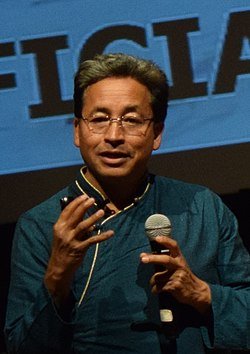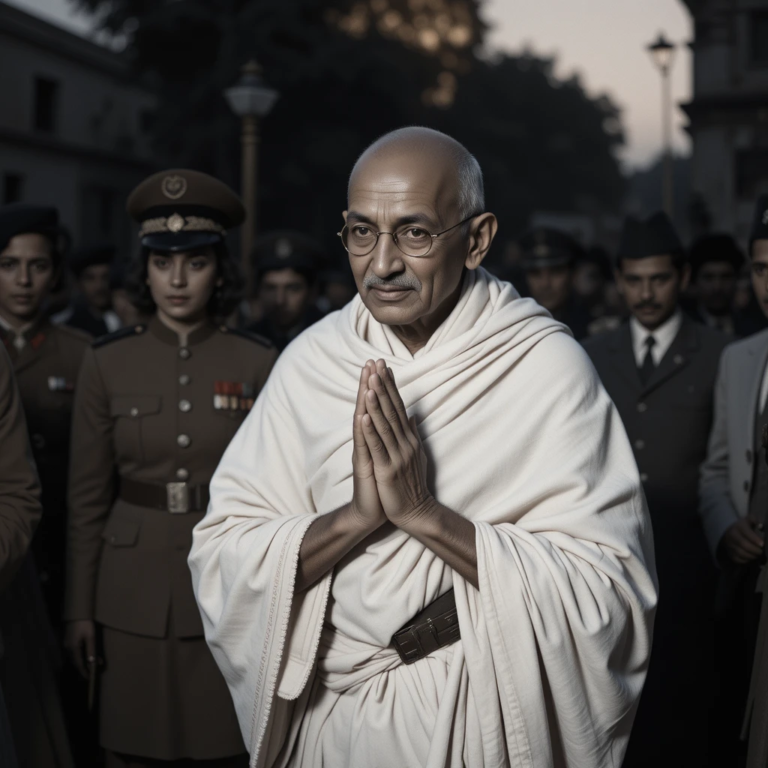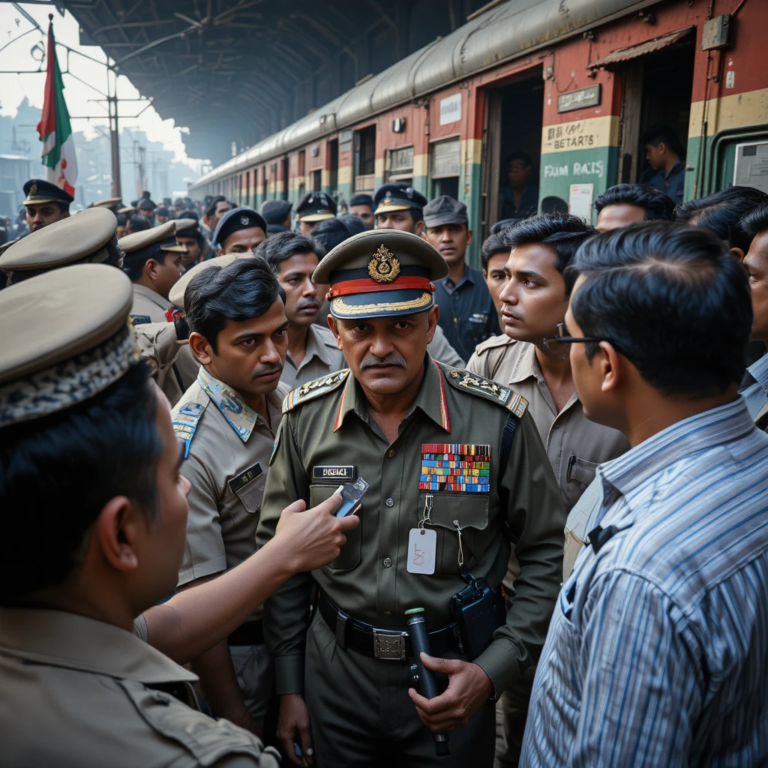Introduction
The narrative that Pushyamitra Shunga (reigned c. 185–149 BCE) persecuted Buddhists and destroyed vihāras is one of the most enduring yet debated episodes in ancient Indian historiography. These stories, primarily preserved in Buddhist texts such as the Ashokāvadāna, portray Pushyamitra as a Brahminical reactionary who reversed Mauryan patronage of Buddhism, initiating a violent campaign against monastic communities.^1
Modern historians and archaeologists approach these narratives with caution. While Buddhist texts describe massacres and the destruction of monasteries, material evidence often paints a more nuanced picture, with some Buddhist centers flourishing during the Shunga period. Understanding the historical reality requires a careful examination of textual sources, epigraphic and numismatic evidence, and archaeological data, alongside consideration of the political and religious context of 2nd century BCE India. This article provides a comprehensive analysis of Pushyamitra Shunga’s reign, the textual accusations of Buddhist persecution, and the scholarly debates surrounding them, offering a balanced perspective grounded in primary sources and contemporary research.
Historical Background of Pushyamitra Shunga
Pushyamitra Shunga, a Mauryan general and Brahmin by birth, emerged as a pivotal figure in Indian history by overthrowing the last Mauryan ruler, Brihadratha, around 185 BCE. The Puranas, including the Vayu and MatsyaPuranas, credit him with founding the Shunga dynasty, which ruled northern India for approximately a century.^2 The overthrow of the Mauryan dynasty marked a significant political shift, ending centralized imperial authority established by Chandragupta Maurya and expanded by Ashoka. The Shunga dynasty, although smaller in territorial extent, played a significant role in shaping the political, cultural, and religious landscape of post-Mauryan India.
Pushyamitra is traditionally depicted as a staunch Brahmin who sought to revive Vedic rituals, particularly the aśvamedha (horse sacrifice), which symbolized his assertion of sovereignty and adherence to orthodox Brahmanical rites.^3 The Shunga dynasty’s administration was heavily centered on the northern Ganges plain, with probable capitals at Pataliputra and later Ujjain. Coins and inscriptions indicate a relatively decentralized polity, with local rulers exercising significant autonomy, yet acknowledging Shunga overlordship.^4
The political climate during Pushyamitra’s reign was complex. The Shungas faced threats from Indo-Greek kingdoms in the northwest and required military campaigns to secure their borders. These campaigns, combined with the dynastic transition, created a volatile environment in which religious and political tensions could intersect, potentially giving rise to the perception of anti-Buddhist activity.
Buddhism Before Pushyamitra
Prior to Pushyamitra’s rise, Buddhism had flourished under Mauryan patronage, particularly during the reign of Ashoka (c. 268–232 BCE). Ashoka’s support included the construction of stupas, viharas, and the sponsorship of monastic communities throughout the Indian subcontinent and beyond.^5 The Buddhist Sangha had become a significant social and religious institution, with monasteries functioning as centers of learning, pilgrimage, and local administration.
Buddhist communities were not monolithic; they included various sects such as the Sthaviravāda, Mahāsāṃghika, and other early schools, often in tension with one another over doctrinal issues. Patronage from rulers like Ashoka ensured institutional stability, allowing Buddhism to expand materially and culturally. The sudden end of Mauryan central patronage under Pushyamitra could have created vulnerabilities, making Buddhist institutions more susceptible to both local political pressures and historical narratives of persecution.^6
Buddhist Textual Narratives Accusing Pushyamitra
Ashokāvadāna
The principal textual source alleging that Pushyamitra persecuted Buddhists is the Ashokāvadāna, a Sanskrit collection of Buddhist legends compiled several centuries after the events it describes. In this text, Pushyamitra is depicted as hostile toward Buddhist monks, offering bounties for their heads and attempting to destroy prominent monasteries, including Kukkutarāma.^7 According to the Ashokāvadāna, he motivated his soldiers and officials to attack Buddhist institutions, portraying himself as a defender of Brahmanical orthodoxy.
Divyāvadāna and Tibetan Chronicles
Other Buddhist sources, such as the Divyāvadāna and Tibetan chronicles like Tāranātha’s histories, amplify the narratives found in the Ashokāvadāna. These sources often include supernatural interventions, miraculous survival stories of monks, and moralizing accounts that frame Pushyamitra as a villain whose deeds were ultimately thwarted by divine forces.^8 Such accounts are valuable for understanding Buddhist collective memory and sectarian perspectives but are often treated with caution when reconstructing historical events.
Sri Lankan Sources
Sri Lankan Buddhist chronicles, including the Mahāvaṃsa, refer indirectly to periods of difficulty for the Sangha in the subcontinent. While they do not provide detailed accounts of Pushyamitra’s actions, they contribute to the broader narrative of post-Mauryan challenges faced by Buddhist communities, supporting the notion that Buddhist authors remembered political transitions as threatening to monastic institutions.^9
Motifs and Narrative Intent
Across these texts, common motifs emerge: the image of a violent Brahminical king, the threat to monasteries, miraculous rescues, and the endurance of Buddhism despite persecution. Scholars argue that these motifs serve not only to record historical events but also to reinforce sectarian identity, moral lessons, and community cohesion in the face of political and religious uncertainty.^10
Interpretation of the Ashokāvadāna Story
Dating and Authorship
The Ashokāvadāna was likely compiled several centuries after Pushyamitra’s reign, probably around the 2nd–3rd century CE, though it draws on earlier oral traditions. Its compilation long after the events described introduces challenges for historical reliability, particularly regarding specific episodes of violence or persecution.^11
Legendary vs Historical Elements
The text contains elements characteristic of hagiography, including miraculous events, divine interventions, and moralistic storytelling. For example, monks are described as surviving assassination attempts through supernatural means, and Pushyamitra’s army is sometimes depicted as facing divine retribution. Such legendary embellishments complicate the distinction between historical fact and literary invention.^12
Analysis of the Persecution Episode
While the Ashokāvadāna explicitly narrates targeted attacks against Buddhist monks and monasteries, modern historians caution against taking these accounts at face value. The text likely reflects a sectarian perspective and may exaggerate or interpret political actions as religious persecution. Some scholars suggest that localized military actions, withdrawal of royal patronage, or conflicts over resources may have been reframed in Buddhist memory as anti-Buddhist campaigns.^13
Symbolic and Polemical Purposes
The narrative serves multiple functions:
- Communal memory: Recording periods of hardship and survival reinforces Buddhist identity.
- Moral instruction: Depicting Pushyamitra as a villain conveys lessons about dharma and karmic consequences.
- Legitimizing resilience: The survival of Buddhism despite persecution emphasizes its moral and spiritual superiority.^14
Footnotes for Part 1
- Ashokāvadāna, ed. E. B. Cowell, The Divyāvadāna: A Collection of Early Buddhist Legends (Cambridge: Cambridge University Press, 1886), 142–145.
- Romila Thapar, A History of India, Vol. 1: From the Earliest Times to 1000 CE (New Delhi: Penguin Books, 2002), 187–190.
- Vincent A. Smith, The Early History of India (Oxford: Clarendon Press, 1924), 243–245.
- D.C. Sircar, Indian Epigraphy (Delhi: Motilal Banarsidass, 1996), 112–115.
- Ashoka, Rock Edicts in J. F. Fleet, Corpus Inscriptionum Indicarum (Calcutta: Government of India, 1888), 27–32.
- Upinder Singh, A History of Ancient and Early Medieval India (New Delhi: Pearson, 2008), 233–236.
- Ashokāvadāna, 146–150.
- Étienne Lamotte, History of Indian Buddhism (Paris: Université Catholique de Louvain, 1988), 312–315.
- Mahāvaṃsa, trans. Wilhelm Geiger, The Mahavamsa or Great Chronicle of Ceylon (Colombo: Ceylon Government Press, 1912), 65–70.
- Romila Thapar, Early India: From the Origins to AD 1300 (Berkeley: University of California Press, 2004), 180–182.
- Lamotte, History of Indian Buddhism, 310–312.
- John S. Strong, The Legend and Cult of Upagupta (Princeton: Princeton University Press, 1992), 45–50.
- R.K. Mishra, “Pushyamitra Shunga and the Buddhists,” Journal of the Royal Asiatic Society 14, no. 2 (2004): 125–140.
- Strong, The Legend and Cult of Upagupta, 52–55.
Archaeological Evidence
Assessing Pushyamitra Shunga’s alleged persecution requires examining the archaeological record. If large-scale destruction of Buddhist monasteries occurred, traces should appear at key sites.
Sanchi
Sanchi, located in modern Madhya Pradesh, is one of the most significant Buddhist centers of the post-Mauryan period. Excavations led by John Marshall (1905–1912) revealed substantial construction and renovation of stupas and railings during the Shunga period. Notably, Stupa No. 1 was adorned with numerous stone railings and gateways featuring early Shunga stylistic elements.^1
These findings suggest that Buddhist artistic and ritual activity continued under Shunga rule. While the Shungas themselves may not have sponsored Buddhist monuments directly, private and local patronage persisted, indicating that Buddhism remained institutionally viable.
Bharhut
Bharhut, in northern Madhya Pradesh, offers further evidence of continued Buddhist activity. Excavations by Alexander Cunningham and Marshall documented railings and gateways dating to the early post-Mauryan period. Many reliefs depict Jataka stories and Buddhist iconography. Stylistic analysis attributes some work to the Shunga period or slightly thereafter, demonstrating ongoing artistic production within Buddhist communities despite Pushyamitra’s rule.^2
The survival and expansion of monuments at Sanchi and Bharhut contrast with textual claims of systematic destruction, suggesting that if any persecution occurred, it was localized rather than empire-wide.
Taxila and Kaushambi
Archaeologists have observed damage layers in sites like Taxila (Takṣaśilā) and Kaushambi. Some scholars propose that these layers could reflect military campaigns associated with Pushyamitra or regional instability.^3
However, dating is imprecise, and other explanations — such as natural disasters or later invasions — cannot be ruled out. While isolated acts of violence may have occurred, these do not constitute definitive evidence of a systematic anti-Buddhist policy.
Epigraphic and Numismatic Evidence
Contemporary inscriptions and coins provide another lens on Pushyamitra’s reign.
- Inscriptions: No Shunga-era inscription explicitly orders violence against Buddhist monasteries or monks. Most surviving inscriptions, such as the Dhanadeva and Ayodhya inscriptions, focus on donations, royal authority, or territorial claims rather than religious persecution.^4
- Coins: Shunga coinage, including punch-marked silver pieces, confirms political control and economic activity but does not reference anti-Buddhist campaigns.^5
The absence of explicit administrative evidence for persecution is a key argument against interpreting Buddhist textual narratives as strictly historical.
Historiographical Debate
Scholars remain divided over the historical reliability of Buddhist claims.
Early Historians
19th- and early 20th-century historians often accepted Buddhist accounts as broadly accurate. For example, Vincent Smith and some colonial scholars cited the Ashokāvadāna as evidence of Pushyamitra’s hostility toward Buddhists.^6
Marxist and Revisionist Approaches
Later historians, including D.D. Kosambi and Romila Thapar, have critiqued literal readings of the texts. They argue that Buddhist narratives reflect sectarian memory, political polemic, and literary embellishment rather than objective history. Kosambi emphasized structural socio-economic analysis, noting that decline in Mauryan patronage could explain Buddhist hardships without assuming systematic massacre.^7
Modern Scholarship
Recent research integrates archaeology, epigraphy, and textual criticism. Scholars such as Étienne Lamotte, Upinder Singh, and R.K. Mishra stress regional variation and political motivations, noting that while Pushyamitra may have favored Brahmanical rituals and occasionally opposed Buddhist institutions, there is no conclusive evidence of empire-wide persecution.^8
Political and Socio-Religious Context
Understanding Pushyamitra’s reign requires considering broader political and religious factors.
- Military Campaigns: The Shungas faced threats from Indo-Greek kingdoms and other regional powers. Buddhist monasteries near frontier regions could have suffered collateral damage during military operations.^9
- Brahmanical Revival: Pushyamitra’s promotion of Vedic sacrifices reflects his Brahminical orientation, which may have displaced Mauryan Buddhist patronage.
- Sectarian Dynamics: Buddhist authors writing centuries later may have interpreted political or economic policies as religious persecution, amplifying the narrative of Pushyamitra as a persecutor.^10
Assessment of the Persecution Claim
Combining textual, archaeological, and epigraphic evidence leads to a nuanced assessment:
- Buddhist texts vividly describe persecution, which reflects sectarian memory and communal identity.
- Archaeological evidence shows continued Buddhist activity at major centers such as Sanchi and Bharhut, indicating resilience rather than systematic destruction.
- Damage at some sites (e.g., Taxila, Kaushambi) may reflect localized conflict or frontier instability, not empire-wide policy.
- Epigraphic silence on decrees ordering mass violence strengthens the argument against a literal interpretation of Buddhist narratives.
Conclusion: Pushyamitra’s reign may have included selective hostility toward Buddhist institutions, particularly in politically sensitive areas, but the evidence does not support a campaign of widespread, systematic persecution.
Legacy and Memory
The narrative of Pushyamitra as a persecutor of Buddhists has persisted in:
- Buddhist collective memory, forming part of hagiographic and moralizing literature.
- Historiographical debates, influencing early colonial and nationalist interpretations of Indian religious history.
- Modern popular discourse, sometimes cited in discussions of Hindu-Buddhist relations in ancient India.
Scholars caution against using these narratives as straightforward historical accounts. Instead, they emphasize the importance of cross-referencing texts with material evidence and considering the motivations behind sectarian storytelling.
Modern Misuse and Popular Narratives
In contemporary discourse, Pushyamitra’s alleged persecution is sometimes portrayed as emblematic of religious intolerance. Historical research, however, demonstrates that:
- Buddhist texts may exaggerate or reinterpret events.
- Political, military, and economic factors often explain institutional decline more plausibly than doctrinal hostility.
- Archaeology and epigraphy provide counter-evidence showing continuity of Buddhist institutions during the Shunga period.
Responsible historical analysis requires recognizing both the memory of persecution and the material evidence of resilience.
Conclusion
The story of Pushyamitra Shunga and Buddhist persecution is a complex intersection of politics, religion, and historical memory. Buddhist texts present vivid accounts of violence, reflecting communal memory and moral concerns, but the archaeological and epigraphic record indicates continued Buddhist activity and resilience.
Modern scholarship tends to interpret these events as localized episodes and sectarian narratives rather than evidence of empire-wide persecution. The Shunga period illustrates the intricate relationship between political authority, religious patronage, and the ways in which historical events are remembered and recorded.
In summary:
- Textual Evidence: Strong but late, sectarian, and partially legendary.
- Archaeological Evidence: Mixed, with major centers flourishing, minor sites possibly damaged.
- Epigraphic Evidence: Silent on official persecution.
- Historical Interpretation: Most scholars favor a nuanced, regionally varied understanding, combining political, military, and religious factors.
Bibliography
- Ashokāvadāna. Ed. E. B. Cowell. The Divyāvadāna: A Collection of Early Buddhist Legends. Cambridge: Cambridge University Press, 1886.
- Cunningham, Alexander. Archaeological Survey of India Reports. Calcutta: Government of India Press, 1890–1910.
- Geiger, Wilhelm, trans. The Mahavamsa or Great Chronicle of Ceylon. Colombo: Ceylon Government Press, 1912.
- Kosambi, D.D. An Introduction to the Study of Indian History. Bombay: Popular Prakashan, 1956.
- Lamotte, Étienne. History of Indian Buddhism. Paris: Université Catholique de Louvain, 1988.
- Marshall, John. The Buddhist Art of India. London: George Allen & Unwin, 1960.
- Mishra, R.K. “Pushyamitra Shunga and the Buddhists.” Journal of the Royal Asiatic Society 14, no. 2 (2004): 125–140.
- Sircar, D.C. Indian Epigraphy. Delhi: Motilal Banarsidass, 1996.
- Singh, Upinder. A History of Ancient and Early Medieval India. New Delhi: Pearson, 2008.
- Smith, Vincent A. The Early History of India. Oxford: Clarendon Press, 1924.
- Strong, John S. The Legend and Cult of Upagupta. Princeton: Princeton University Press, 1992.
- Thapar, Romila. Early India: From the Origins to AD 1300. Berkeley: University of California Press, 2004.
- Thapar, Romila. A History of India, Vol. 1: From the Earliest Times to 1000 CE. New Delhi: Penguin Books, 2002.



